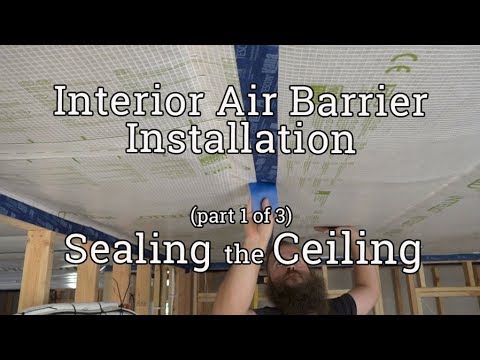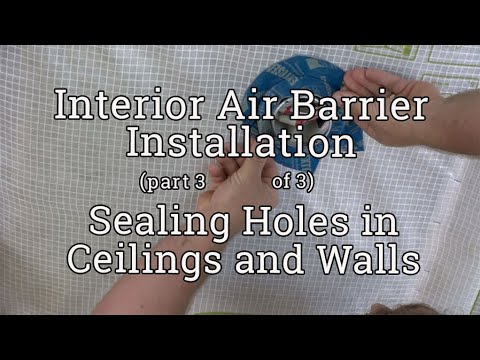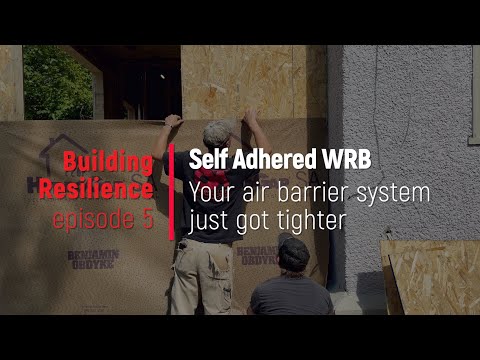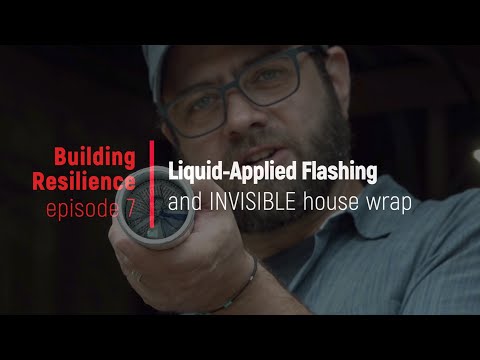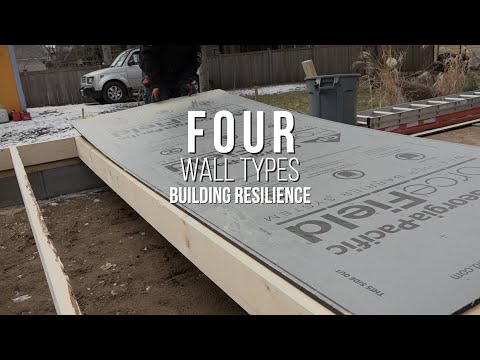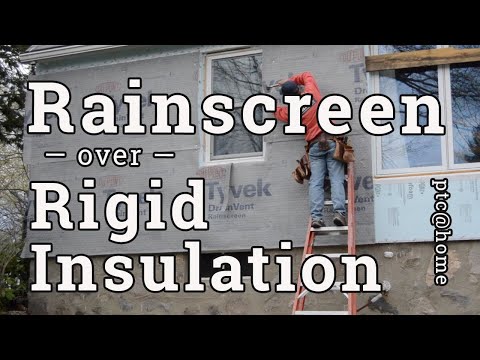Two types of tapes for two air sealing applications
Ben and Rick have already stapled, taped, and squeegeed their way to an airtight ceiling and now it is time to turn to the walls.
They use a blower door and Infrared camera to find any obvious air leaks before installing insulation into the wall cavities.
Covering the walls with the air and vapor retarder membrane is not the tricky part. Sealing the membrane to the house is the tricky part. The top is taped, just like the ceiling.
“We start by pulling tension across the top, stapling across the top and then we staple down the studs to about ten-inches above the floor. Then we fold our flap up and do the double-sided tape beneath it to make our connection to the floor.
Move it into the corner, kind of burnish it in with your fingers. This stuff is ruthlessly sticky, so you want to be slow.”
—Ben Bogie, remodeler
The acrylic adhesive is very sticky, but it still takes about 24 hours to adhere fully, so when he peels off the backing strip, Ben does it at a very low angle to avoid pulling the tape off the subfloor.
When the tape is down and unbound, they lower the membrane. Ben smooths the membrane down the face of the framing and beds it into the sticky adhesive.
He then tools the tape into place, allowing the adhesive to ‘wet-out’ or infiltrate the topography of the substrate.
He does the same thing in the corner, tooling the membrane down the framing, and sealing it to the floor.
Finally, Rick comes up behind stapling the membrane to the studs, the bottom plate, and the subfloor.
This is the second part of a three-part series on installing interior air barrier/vapor retarder membranes. Also see part 1, Ceilings and part 3, Holes.
